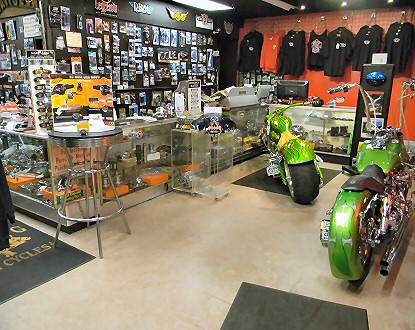Check Out the current Motocross Gear NZ for Every Degree of Rider
Check Out the current Motocross Gear NZ for Every Degree of Rider
Blog Article
Understanding Bike Gears: How to Enhance Your Riding Experience
In the realm of motorcycling, grasping the art of equipment adjustment is crucial for boosting your riding efficiency. Properly using and understanding motorcycle gears can dramatically affect control, fuel, and acceleration performance, changing an average experience into a smooth, thrilling trip.
Comprehending Equipment Mechanics
At the core of motorcycle dynamics, gear auto mechanics play a pivotal function in transforming engine power into activity, inevitably determining rate and control. The gear proportions, very carefully created, establish the connection between engine transformations and wheel turns, affecting acceleration and fuel efficiency.
Comprehending gear auto mechanics begins with identifying the importance of the gearbox, which houses numerous gears of varying dimensions. These gears communicate through a procedure called meshing, where teeth of different gears involve to transfer power. The accuracy of this interaction is important; any type of misalignment or damage can cause ineffective power transfer, impeding efficiency. In addition, the setup and size of equipments affect the motorcycle's capability to handle different tons and speeds.
Additionally, the idea of equipment changing is integral to optimizing efficiency. Smooth and prompt shifts guarantee that the engine operates within its optimum power band, preventing unneeded pressure and enhancing durability (motocross gear nz). By understanding these mechanical ins and outs, cyclists can achieve a harmonious mix of power, effectiveness, and control, raising their riding experience
Timing Your Shifts
Change timing mastery is vital for maximizing bike efficiency and enhancing the riding experience. Correctly timed shifts guarantee that the engine runs within its ideal power band, which is crucial for maintaining control, accomplishing smooth velocity, and guaranteeing the durability of the motorcycle. Cyclists must develop an instinctive sense of when to move gears, which includes recognizing the partnership in between engine changes per minute (RPM) and rate.
To master change timing, pay close attention to the engine's sound and feel, as these offer important clues about when to change equipments. The ideal change factor usually takes place when the engine approaches the upper variety of its power band without getting to the redline. Changing too early can cause an absence of power, while moving as well late may cause unnecessary engine pressure
In addition, roadway problems and riding design influence change timing. In contrast, throughout highway riding, less changes at greater rates can be extra proper.
Enhancing Gas Efficiency
While grasping bike gears is vital for efficiency, boosting gas efficiency is equally important for both environmental and financial factors. Optimum gas usage not only decreases functional prices but additionally minimizes the environmental footprint of riding. To accomplish this, one have to recognize the detailed connection between gear choice and engine efficiency.
To start with, choosing the best gear at proper rates can substantially impact fuel usage. Riding in a higher equipment at lower speeds can lead to engine hauling, which is destructive to both fuel economic situation and engine health. Conversely, riding in reduced gears at broadband results in unnecessary gas intake. Hence, maintaining an ideal equilibrium by moving equipments in placement with road problems and anticipated maneuvers is vital.
Additionally, normal maintenance plays a critical duty in gas efficiency. Ensuring that the motorbike is well-tuned, with clean air filters and appropriately inflated tires, can improve the rules of aerodynamics and minimize gas wastefulness. Embracing a riding design that accepts steady acceleration and smooth deceleration can add to better fuel economic situation.

Strategies for Smooth Transitions
Accomplishing smooth gear changes is fundamental to improving the riding experience and ensuring the longevity of a investigate this site motorbike's transmission system. Appropriate gear changing not just adds to a seamless ride but also decreases wear and tear on the mechanical components. To master the art of smooth shifts, cyclists need to concentrate on a few essential strategies.

Secondly, clutch control plays a critical role. Engaging and disengaging the clutch smoothly needs practice. The clutch bar must be released slowly, permitting a smooth transfer of power from the engine to the wheels without triggering a jolt or sudden motion.

Adapting to Roadway Conditions
Navigating diverse roadway problems is an important skill for any motorcyclist intending to maintain control and security. Whether you're riding on damp surfaces, crushed rock roadways, or navigating sharp turns, your capability to adjust your equipment usage and riding strategy is extremely important. Comprehending how to adjust your gears appropriately can considerably influence grip and stability, guaranteeing a more secure trip.
On damp roadways, it is advisable to preserve greater equipments to minimize torque and lessen wheel spin. This strategy aids preserve grasp on slippery surfaces, enabling smoother acceleration and slowdown. On the other hand, when riding on crushed rock or uneven surface, lower equipments are better. Lower equipments supply better control and allow you to react even more quickly to unforeseen modifications in the road surface area.
Sharp curves demand exact gear management to balance speed and control. Downshifting before going into a curve can help keep energy while ensuring the bike stays steady throughout the turn. Constant technique in varied problems boosts your ability to forecast and respond to modifications in road texture and slope.
Final Thought
Grasping bike equipments dramatically enhances the riding experience by boosting gas, control, and acceleration effectiveness. A thorough understanding of equipment mechanics and specific shift timing makes certain the engine operates within its ideal power band, while smooth changes through reliable clutch and throttle sychronisation increase comfort and performance. Adapting gear selection to various road problems, such as using higher gears on damp surfaces and reduced equipments on gravel, further improves handling and security. Inevitably, these abilities elevate the overall trip.
Recognizing gear technicians starts with acknowledging the significance of the transmission, which houses multiple gears of differing sizes. These equipments connect through a procedure understood as meshing, where teeth of different equipments engage to transmit power (mx gear nz). Mild adjustments to the throttle during equipment shifts can protect against jerky motions and preserve a consistent riding pace
Whether you're riding on wet surfaces, crushed rock roadways, or navigating sharp turns, your capability to adapt your equipment usage and riding strategy is critical. Adjusting gear selection to different roadway conditions, such as using higher check gears on wet surface areas and lower equipments on gravel, more enhances handling and safety and security.
Report this page